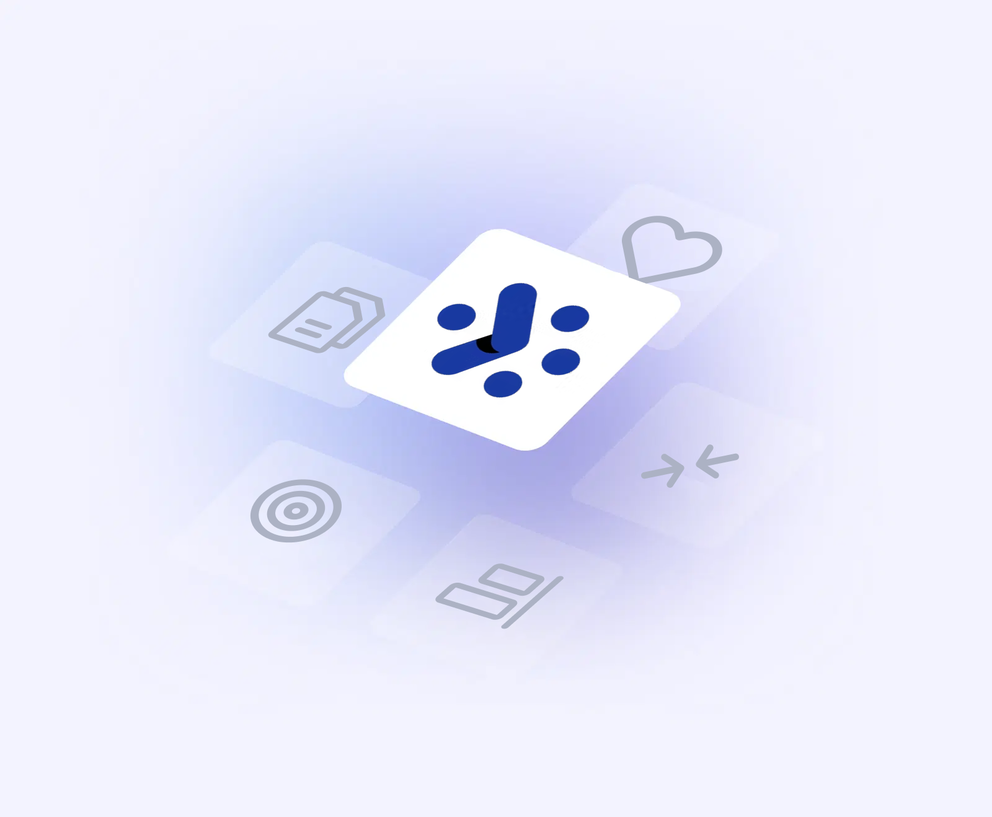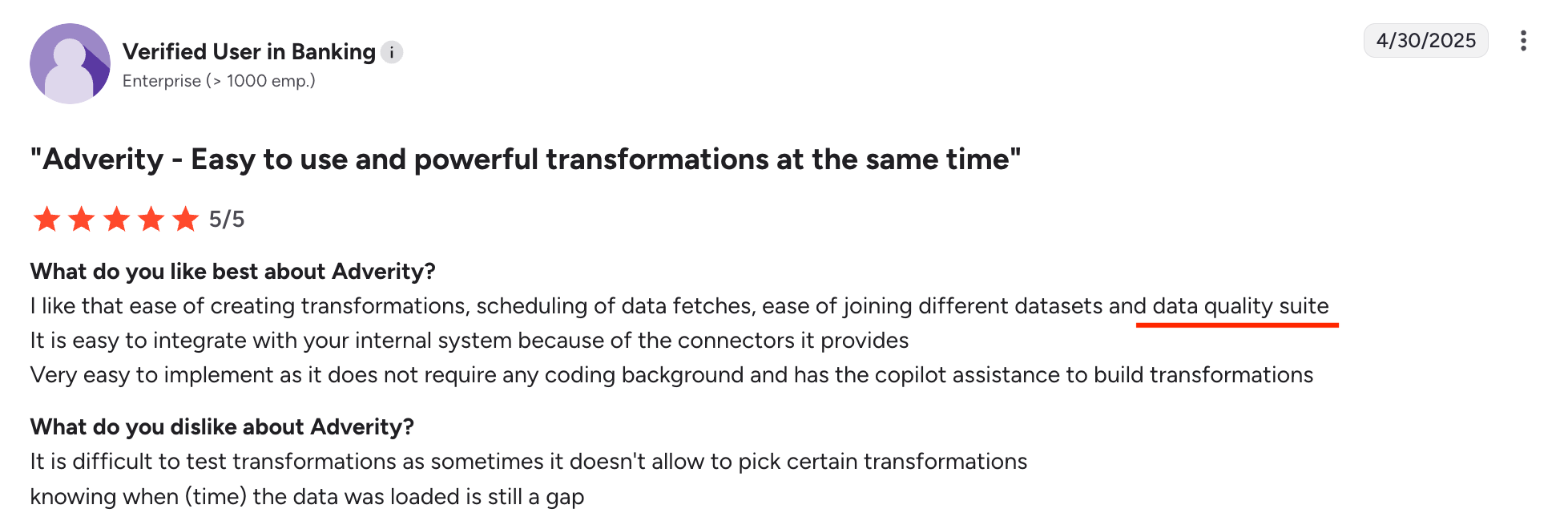TL:DR
Adverity is a data integration platform (ETL) designed to extract, transform, and load marketing data into other tools for analysis and reporting. It's not an all-in-one reporting solution but rather a powerful data pipeline for complex data needs.
Who it’s best for:
Large enterprises with existing data infrastructure and dedicated data engineering teams
Key features at a glance:
| Feature | Adverity |
| Integrations | 600+ pre-built connectors; supports custom APIs and workarounds for non-native sources |
| Stable connections | Generally stable, but users report issues after updates, leading to broken dataflows |
| Ease of use | Steep learning curve; built for technical users. Not beginner-friendly for non-technical marketers. |
| Data blending | Strong in data transformation, joining datasets, applying business logic, and cleaning inconsistencies |
| Internal dashboards | Basic, functional dashboards; limited design customization and "wow" factor. Not actively promoted |
| Customizable reports | Flexible but scattered manual setup for sharing; white-labeling available but limited in control |
| Report sharing & automation | Requires external tools for scheduling, formatting, and sharing reports |
| Security | SOC 2 Type 2 certified, ISO 27001, GDPR and UK GDPR compliant, California Consumer Privacy Act (CCPA) compliant, Digital Operational Resilience Act (DORA) compliant, EU E-Privacy Directive |
Pros ✅
- Massive library of 600+ marketing data connectors
- Powerful and flexible data cleaning and transformation capabilities
- Responsive customer support
- Works well with popular BI tools like Looker Studio or Tableau
Cons ❌
- High cost and complex pricing
- Little to no native reporting or dashboarding features
- Steep learning curve – long implementation and ROI period
- Some data reliability issues
- Fragmented workflow requiring you to learn, use, and pay for multiple different tools
Why You Can Trust This Review
At Whatagraph, we live and breathe marketing data every day, and we genuinely care about finding you a marketing reporting tool that will make your life easier.
Adverity doesn’t hand out free trials (you’ll need to book a sales call for that). So we couldn’t kick the tires ourselves.
So here’s what I did instead:
- Scoured user forums: Like Reddit, Quora, X, YouTube, and Instagram to see what actual users are saying.
- Read 100+ reviews: From trusted platforms like G2, Capterra, GetApp, and TrustRadius.
- Dug into Adverity’s documentation: Straight from the horse’s mouth—pricing documentation, how-to videos, and feature pages to get a clear sense of what’s supported (and what’s not).
Our goal is to help you make an informed decision, whether that leads you to Adverity, to Whatagraph, or to another solution entirely.
Adverity Pricing
Adverity doesn’t do tiered plans you can click “Buy now” on—it’s a full demo, full sales‑call treatment.
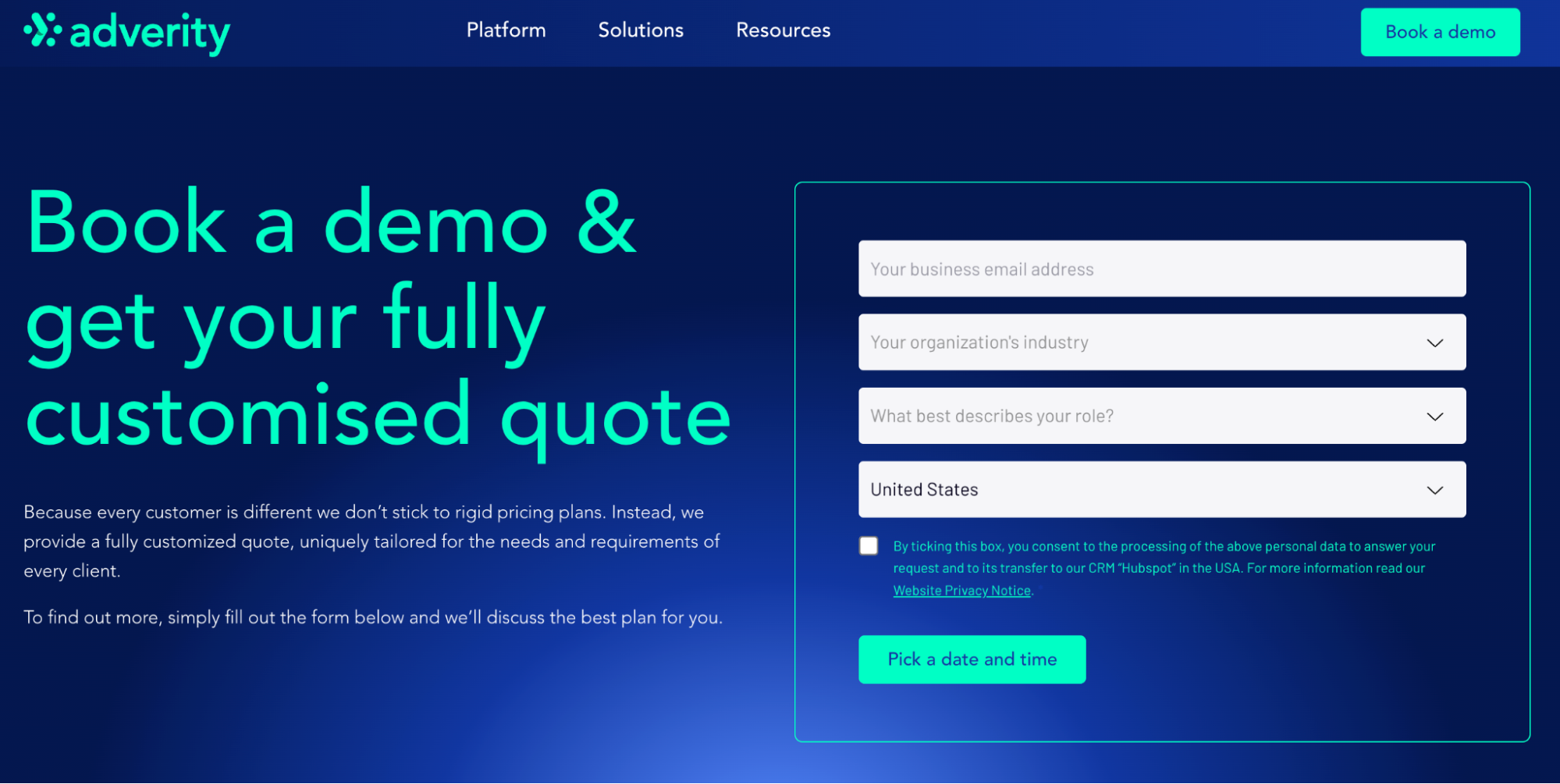 According to real user reviews aggregated by G2, Adverity’s licensing and implementation journey breaks down like this:
According to real user reviews aggregated by G2, Adverity’s licensing and implementation journey breaks down like this:
- Implementation: On average, companies spend about 2 months getting Adverity fully up and running: mapping data pipelines, configuring connectors, and validating workflows.
- ROI: Customers report that it takes roughly 15 months before Adverity’s efficiency gains and consolidated reporting pay back the initial outlay.
- Discount: When you bundle services or agree to longer commitments, it’s common to secure around a 9% discount off list pricing.
But on the Microsoft Azure Marketplace, Adverity flips to a one‑time purchase model: a $200,000 upfront fee covers a full 12‑month subscription.
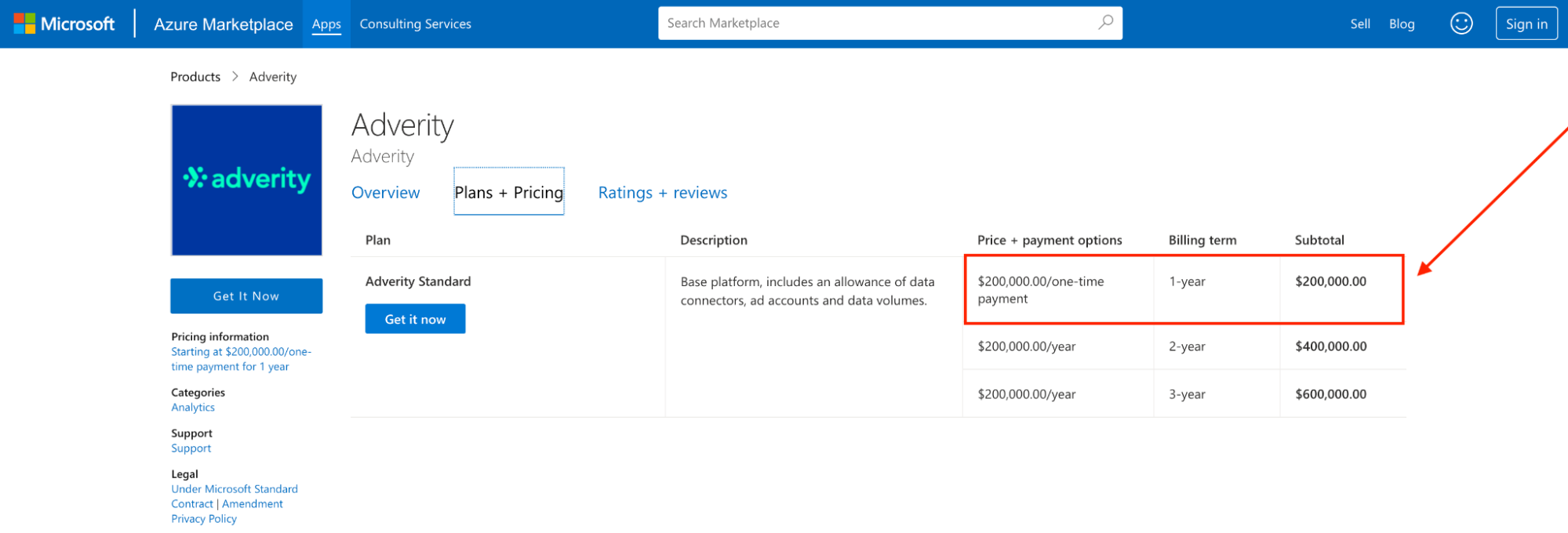 If you think $200,000 is a lot, we agree. And so does a recent review on G2 by Technical Marketer Quynten L.: “it's getting quite expensive.”
If you think $200,000 is a lot, we agree. And so does a recent review on G2 by Technical Marketer Quynten L.: “it's getting quite expensive.”
From some of the sales conversations we’ve had at Whatagraph, users report paying at least $30,000 annually. Also, Adverity’s pricing model isn’t always straightforward. One prospect described it as “based on number of rows, times this, divided by that”—laid out in a massive Excel spreadsheet.
If simplicity matters to you, ask the sales team to walk you through a sample quote using your actual data volumes.
Key takeaways for your budget
- Calculate the total cost of ownership: Adverity is just one piece of your marketing analytics stack. Be sure to factor in associated tools like data visualization platforms (e.g. Looker, Power BI, Tableau), API costs, data storage, and any middleware required to stitch it all together.
- Build in implementation time: On average, users report a 2-month ramp-up period before Adverity is fully integrated into their workflows. This may involve internal engineering time, vendor support, or both; so plan for it in your project timeline and budget.
Real User Reviews: What are Customers Saying About Adverity?
I dug into the places where users speak freely to gather Adverity feedback: social platforms like YouTube, Instagram, Reddit, and X, as well as trusted review sites like G2, Capterra, and GetApp.
Here’s the word on the ground:
Adverity pros: What users love
✅ Easy data integrations and connections
If you’ve ever wrestled with brittle data pipelines or had to manually patch together five sources before your dashboard loads, you’ll get why this matters. Adverity makes the connection process smooth, especially in its “Connect” space, which users call the “best portion” of the platform.
The Connect space is the best portion of Adverity because it is so seamless when it comes to creating, loading, and transforming datastreams.
✅ Flexible scheduling and transformations
Schedule data fetches, build transformations, and join datasets with relative ease. One reviewer called out the platform’s “data quality suite”: a nod to its ability to catch and clean issues before they break reports.
✅ Room to customize if you’re technically-minded
For data operations teams that like to tinker, Adverity supports a wide range of connectors, and even when a native one isn’t available, experienced users report finding clever workarounds.
Here’s what a verified user shared on G2:
There's a lot of customization possible (if you are more of a techie) and in terms of the connectors many are readily available and if not there's the possibility to find work arounds.
Adverity cons: Where users get frustrated
⚠️ Data errors and reliability issues
This came up more than once in the 15 reviews so far in 2025 on G2: unstable pipelines, failed data fetches, and occasional crashes.
There are consistent errors in data and failures in fetching data. The platform also crashes sometimes meaning we are late at getting reports out.

For a platform this powerful, reliability shouldn’t be a gamble. And while some issues may be edge cases, they were common enough to raise flags for teams on tight delivery timelines.
⚠️ Steep learning curve
If you're expecting plug-and-play simplicity, be prepared to invest a bit more time in onboarding.
Here’s what a verified user shared:
While Adverity is powerful, it can have a steep learning curve initially, and some advanced features may require more robust documentation or support for seamless use.
⚠️ Limited built-in tools for exploring and QA’ing your data
Adverity can move your data. But when it comes to exploring it, inspecting it, or quickly checking for issues before visualizing, there’s not much built in to help.
Even five-star reviewers like Data Analyst Chris B. specifically call this out:
While the visualization tool (Explore/Present) offers a lot of basic features, it would be nice to have a BI-style tool for internal use as well.
What Does Adverity Genuinely Do Well?
Adverity is a data integration platform built to do one thing really well: move your marketing data where it needs to go: cleanly, reliably, and on schedule.
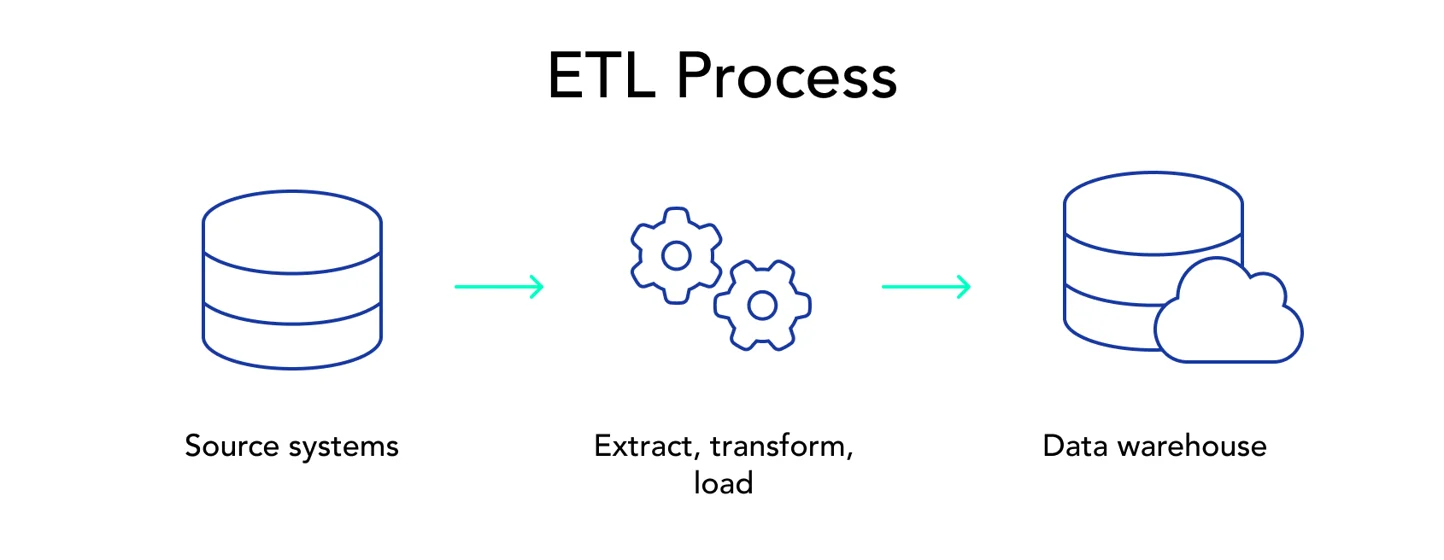
A classic ETL platform, Adverity’s core strengths fall into three buckets:
- Extract: Extract structured and unstructured data from marketing platforms, CRMs, cloud storage buckets, and custom APIs.
- Transform: Once your data’s in the pipeline, Adverity helps you turn it into something usable. You can:
- Join datasets from different sources.
- Apply business logic and mappings.
- Clean up inconsistencies in naming conventions or field types.
- Standardize currencies, time zones, and date formats.
- Enrich fields using lookup tables or external references.
- Schedule data transformations to run automatically.
- Load: Once your data’s been cleaned and shaped, Adverity can push it out to your data warehouse, business intelligence (BI) tool, or data lake of choice: Snowflake, BigQuery, Amazon S3, Tableau, Looker, Power BI, and more.
That said, it’s important to know what Adverity is and what it’s not.
Adverity positions itself as a data integration platform, not an all-in-one marketing reporting solution like Whatagraph.
That means you won’t get a single source of truth within Adverity itself. There's no built-in visualization layer powerful enough to give marketers direct, at-a-glance performance reporting.
And that’s where things can start to break down, especially if you don’t have a team of data analysts backing your workflows.
Let’s go deep into it.
Adverity Deep Dive #1: Data Pulling and Connectors
If your ETL platform can’t talk to all those tools (and talk to them consistently), you’re the one left untangling broken pipelines and scrambling to fill gaps in client reports.
This is where Adverity stakes its claim: it promises to connect to everything. But what does “everything” actually mean? And does it hold up under real-world pressure?
How many out-of-the-box integrations are there?
Adverity offers 600+ pre-built connectors, covering a wide range of ad platforms, analytics tools, social media platforms, CRMs, ecommerce platforms, and databases.
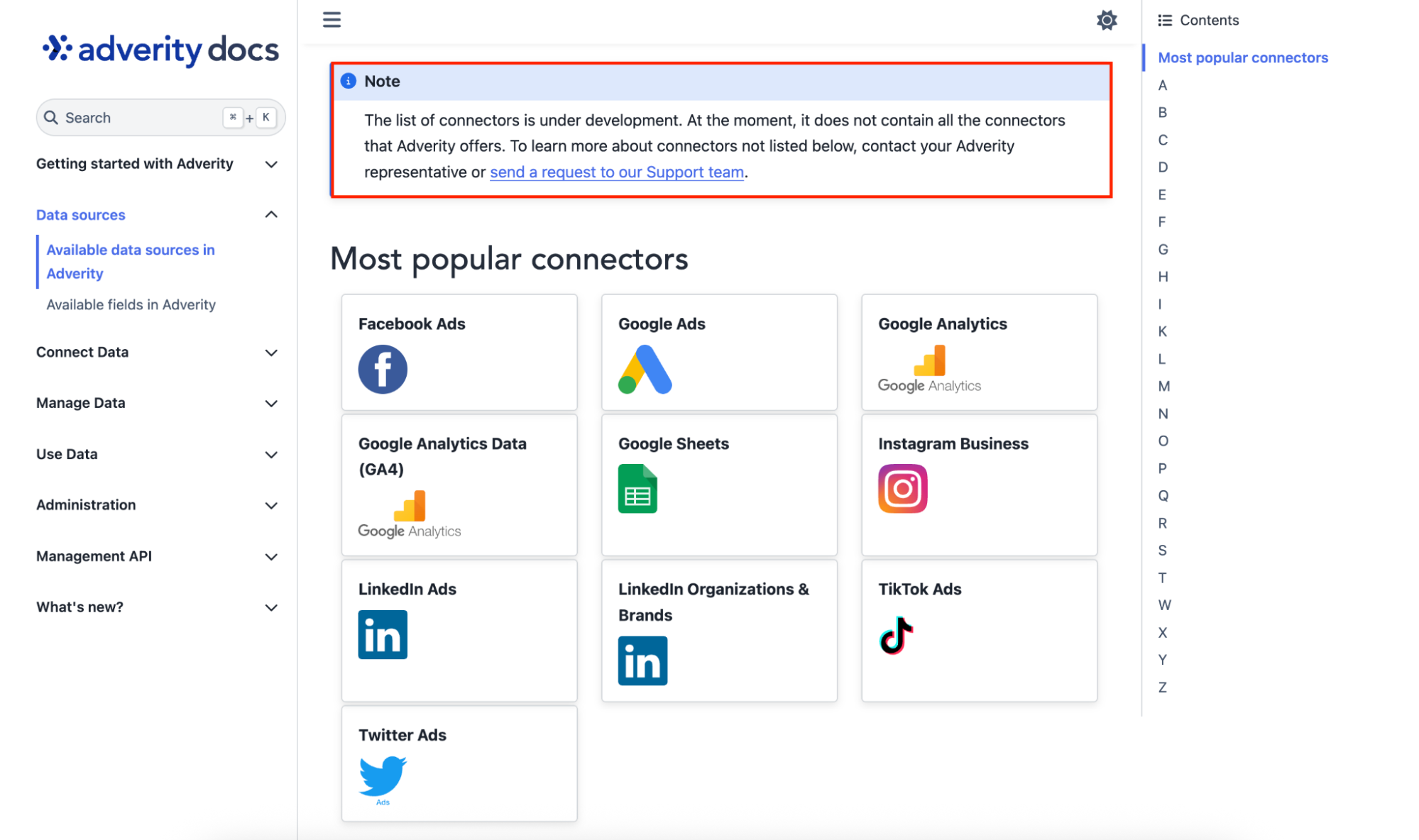 From mainstream tools like Google Ads, Google Analytics, and LinkedIn Ads to more specialized sources like Adjust, StackAdapt, or Rakuten Advertising, Adverity aims to be the connective tissue in your stack.
From mainstream tools like Google Ads, Google Analytics, and LinkedIn Ads to more specialized sources like Adjust, StackAdapt, or Rakuten Advertising, Adverity aims to be the connective tissue in your stack.
While 600+ sounds impressive, availability doesn’t always equal utility.
For example, even at 600+ data sources, Adverity doesn’t offer a crucial integration for SEO data management: SE Ranking. (Whatagraph does, BTW.)
How reliable are these connections day-to-day?
For the most part, Adverity’s connectors are stable, especially when pulling from large, well-documented APIs like Google, Meta, or LinkedIn. Once a connection is up and running, it usually stays that way.
But there are two caveats worth flagging.
1. Things can (and do) break after updates.
Several users report issues when Adverity pushes a new version: dataflows break, connectors drop, and suddenly you’re scrambling to troubleshoot. As one Data Engineer put it:
“When Adverity releases a new version, it can introduce unexpected issues that break existing dataflows or connections. These post-update instabilities can disrupt operations and require urgent troubleshooting, which is frustrating for ongoing workflows.”
2. This is where the “Frankenstack” first rears its head.
Even if Adverity’s connection side is solid, your visualization layer might not be. We’ve seen it firsthand: a perfectly working ETL pipeline suddenly fails to populate a Looker Studio (formerly Google Data Studio) dashboard.
And now you’re in limbo. You’re contacting two separate support teams to solve one faulty data point. Meanwhile, your client’s dashboard is blank, your report is late, and you’re still waiting to see which platform broke your marketing reporting.

The Whatagraph advantage: We’re pretty proud of our rock-solid 99.95% up-time guarantee. Our platform doesn’t break during updates. And say we do go down, you only have to contact one support team. (Us!) Plus, our Product Engineers immediately get a Bat-signal wherever they are to fix the issue pronto.
Adverity’s connections are generally reliable, but no ETL tool operates in a vacuum. If your stack is fragmented across multiple tools, you’re one broken link away from a data fire drill.
Adverity Deep Dive #2: UX and Usability
You can have all the data functionality in the world, but if no one on your team can use the tool without pulling in a developer…it’s dead weight.
You won’t always have an engineer on hand to fix broken dashboards or tweak one out-of-place metric in real time.
So the real test is this: can a non-technical team member—a junior analyst, a client account manager, even your social media intern—log in and handle the basics confidently?
Let’s look at Adverity’s reviews and complaints.
Is the interface intuitive and modern?
Adverity’s interface is structured, but not exactly intuitive. The platform is divided into three areas: Connect Data, Manage Data, and Use Data, which contain familiar components like Datastreams, Authorizations, Dashboards, and Destinations.
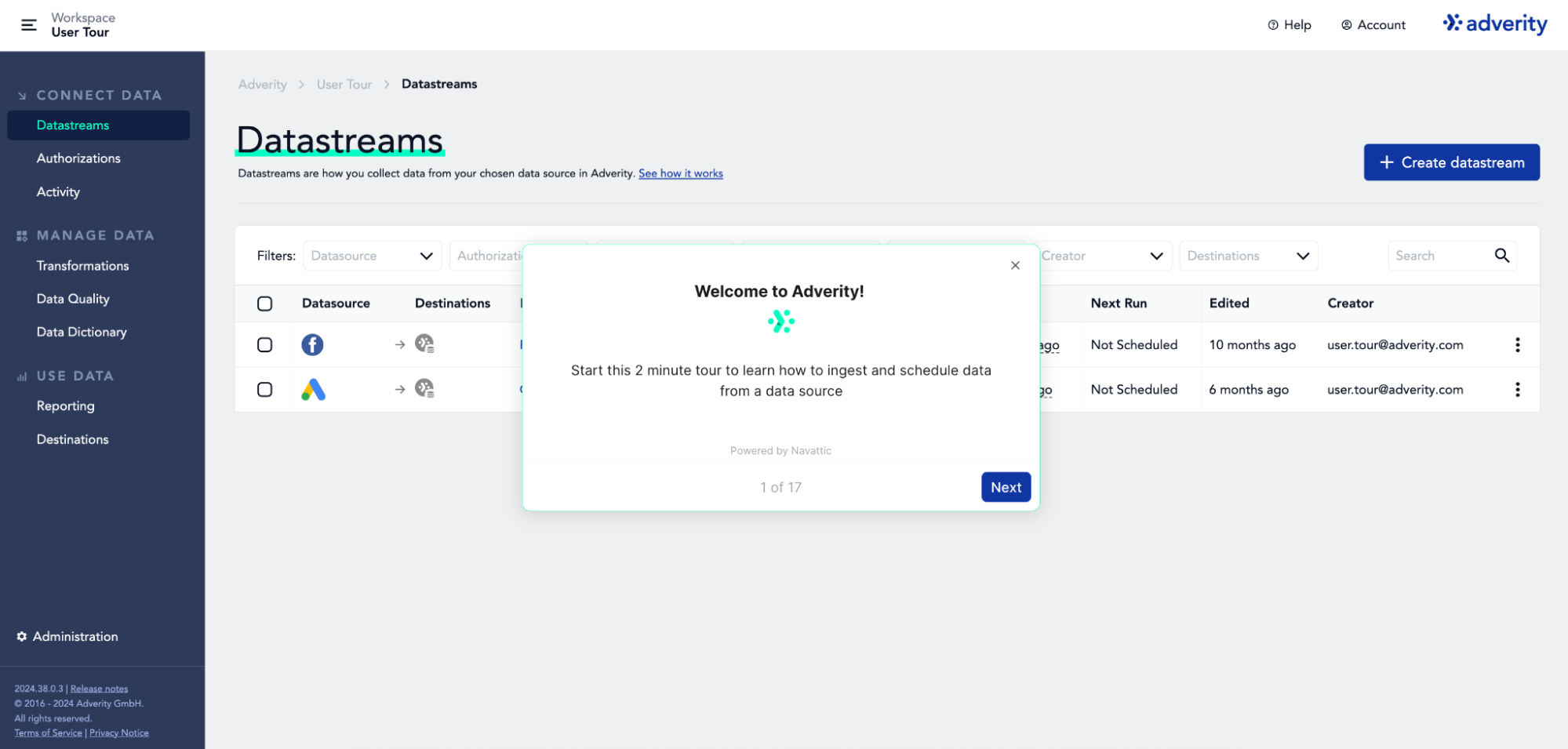
To test it out, I walked through Adverity’s interactive G2 demo, which simulates onboarding for setting up a Facebook Ads connector.
Here’s what the flow looked like:
- 17 steps total for a single datastream setup.
- The first steps: create a data stream → select connector → authorize the connection → configure settings.
- By step 7, you’re still not done.
- You ingest the data, run a fetch, and only then get a definition of what a datastream actually is.
- Scheduling is handled via toggle which is a cool feature, but the system still defaults to UTC, so if daylight saving hits, you’re on your own. And this is a user gripe too, BTW.*
- Then comes transformation setup and data quality monitoring like duplication and other warnings.
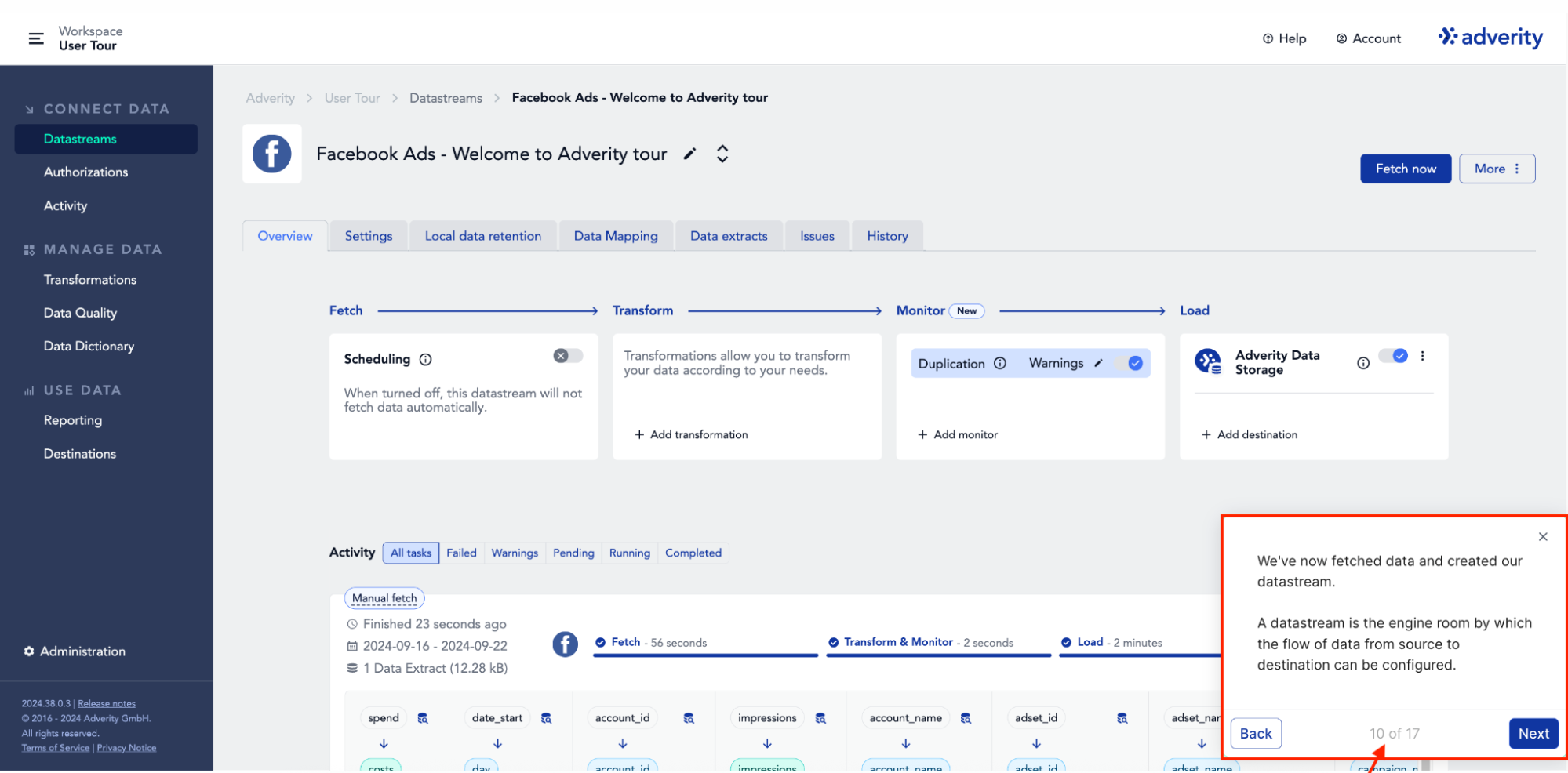
Now, is this comprehensive? Yes.
Is it fast? Technically…it’s positioned as a “2-minute tour.”
The tool assumes a certain level of technical fluency. Even the microcopy leans into jargon: terms like “ingest” and “datastream” show up without much hand-holding. And if you have to leave the workspace to dig into their help documentation, I don’t call that intuitive.
*That timezone detail is important especially if you’re working with international clients across continents. Here’s how one verified user put it:
API schedules are in UTC format, so during BST, we either have to amend all data streams by an hour or advise end users data will be available 1 hour later during summer months.
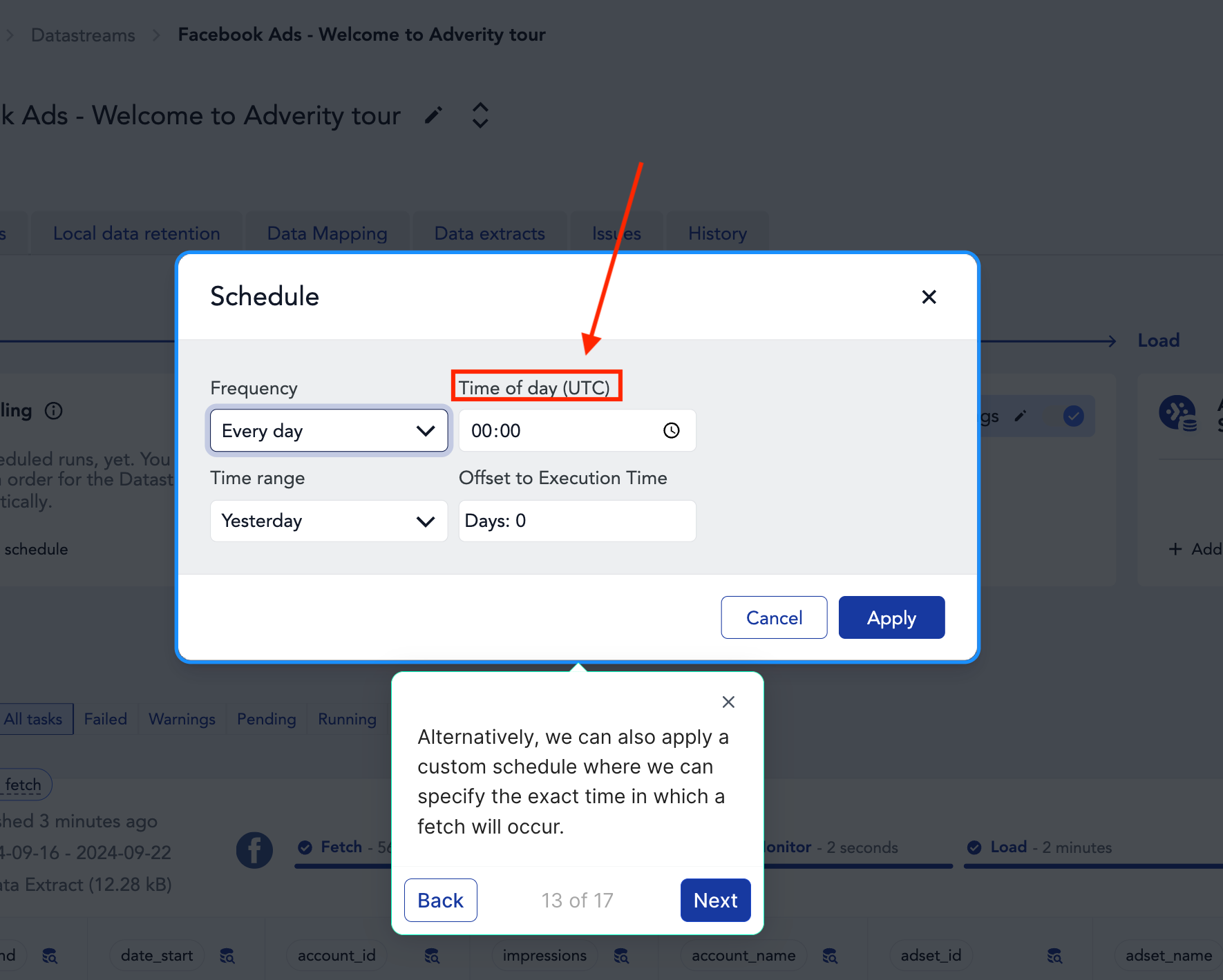
That’s not a small detail when clients are expecting real-time dashboards where they are.
Plus, the user interface leans heavily on muted grays and a dull blue color palette that feels straight out of early-2010s enterprise software. The color contrast isn’t always strong, which could pose issues for users with visual impairments or color sensitivity.
And when I say Adverity doesn’t feel “modern,” that’s not a vague jab at the UI. It’s a felt difference, especially when you compare it to a visually-stunning platform like Whatagraph.
For example, in the Whatagraph report below, you’ve got:
- Clearly signposted buttons (“Reports,” “Preview,” “Actions”).
- Bright, engaging colors that help you stay visually oriented.
- Instant access to help tools, right there in the UI.
- A real sense of hierarchy and space that makes it easy to scan.
- A visual experience that invites playful exploration rather than hesitation.
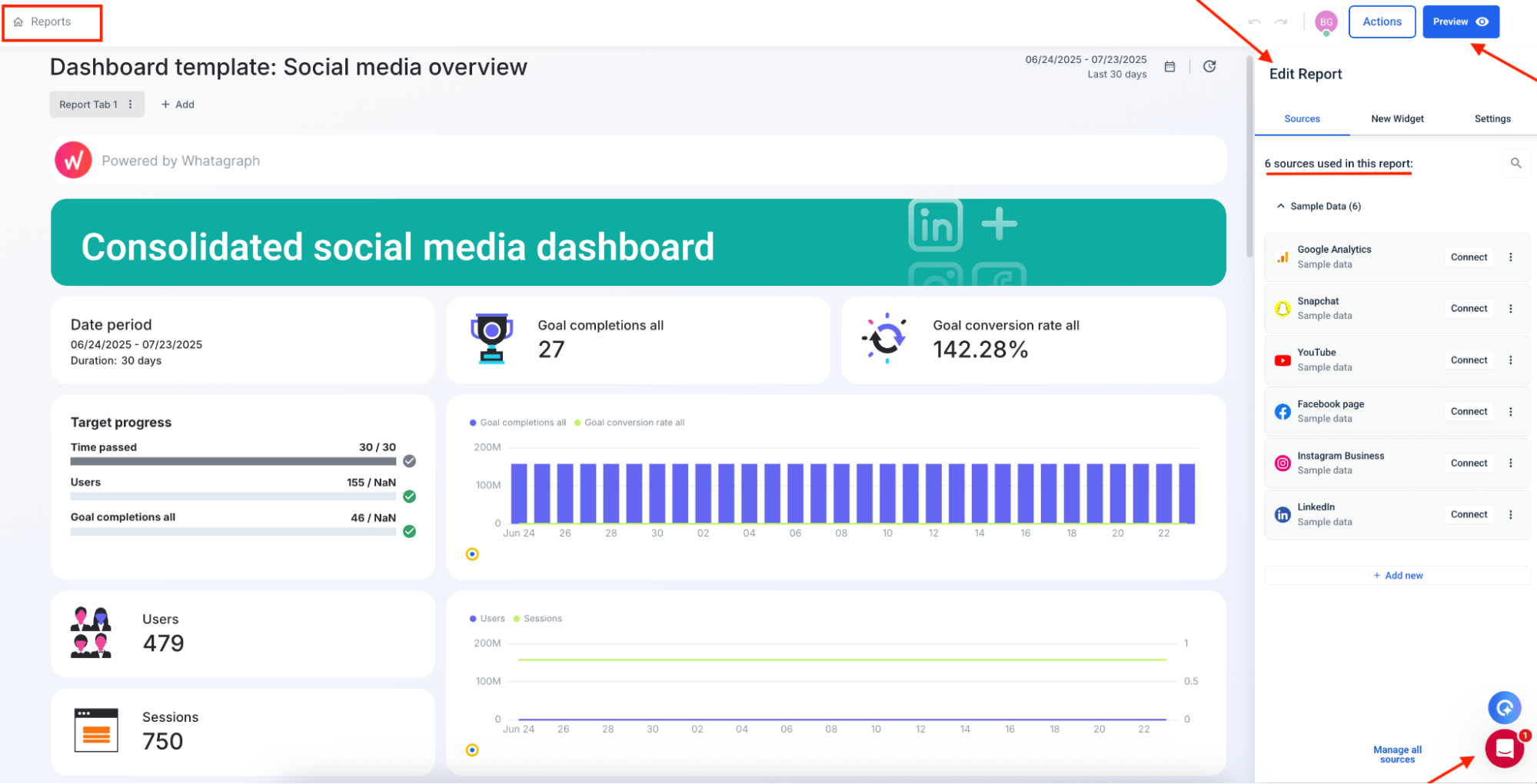
Is Adverity truly beginner-friendly for everyone on your team?
Short answer: no.
If you’re a technical user, the interface gives you power and flexibility.
But if you’re a junior team member, a generalist, or just someone who doesn’t live inside a data pipeline all day (like me), expect to need some onboarding support. And/or a lot of Googling.
“Time consuming to onboard some clients data,” says Charlotte O.
Adverity gives technical teams control, but that control comes at the cost of accessibility. If you're scaling or trying to empower non-technical marketers to own more of the reporting process, be prepared to invest in training.
Adverity Deep Dive #3: Visualization and Reporting
For marketing teams and agencies, reporting is the product.
So let’s talk about how Adverity handles the final mile.
Can Adverity dashboards actually impress your clients?
Not really. And Adverity doesn’t seem all that interested in changing that.
Internally at Whatagraph, we’ve noticed something recently: Adverity is no longer actively promoting its dashboards. There are barely any updates, product highlights, or marketing pushes focused on the visualization layer.
And based on G2 reviews, customers have picked up on this too:
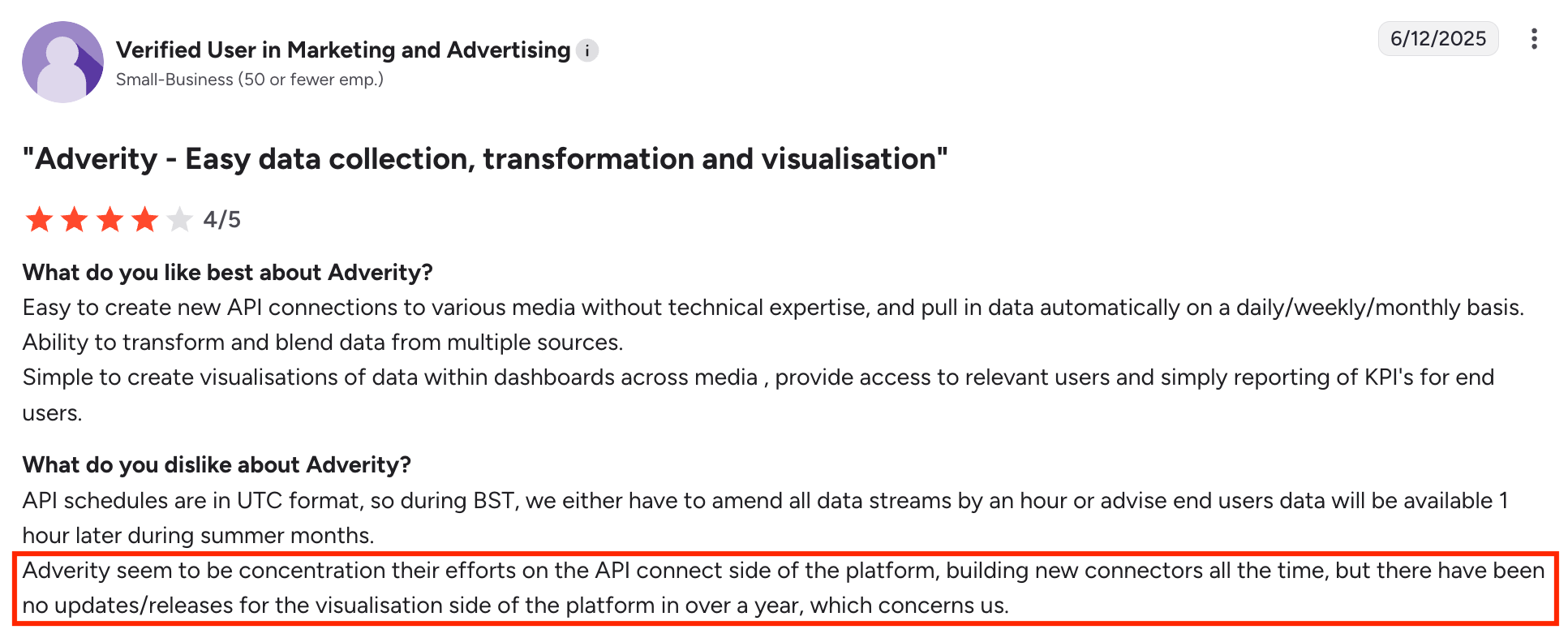 “...no updates/releases for the visualisation side of the platform in over a year, which concerns us.”
“...no updates/releases for the visualisation side of the platform in over a year, which concerns us.”
The dashboards themselves are functional, but limited. There are templates you can choose from to build new reports, save dashboards as templates too; but there’s no rich design customization. No wow factor.
If you’re looking to build a sleek, client-ready experience inside Adverity, you’ll likely be disappointed…
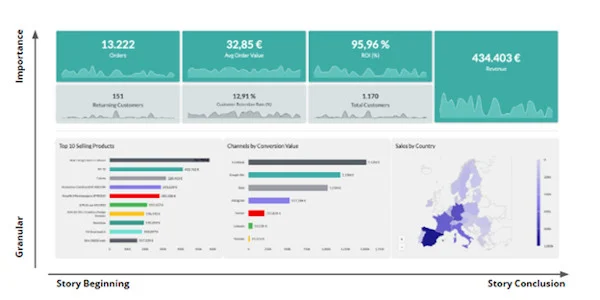
And if even Adverity isn’t promoting its own dashboards anymore, that tells you something.
On the other hand, Whatagraph is a user-friendly marketing performance reporting platform that listens to you.
We’re marketers ourselves, so we built the tool we wish we had: easy to use, intuitive, and blazing fast.
And now with AI-powered report building, we’re bringing speed and functionality in one powerful reporting workspace.
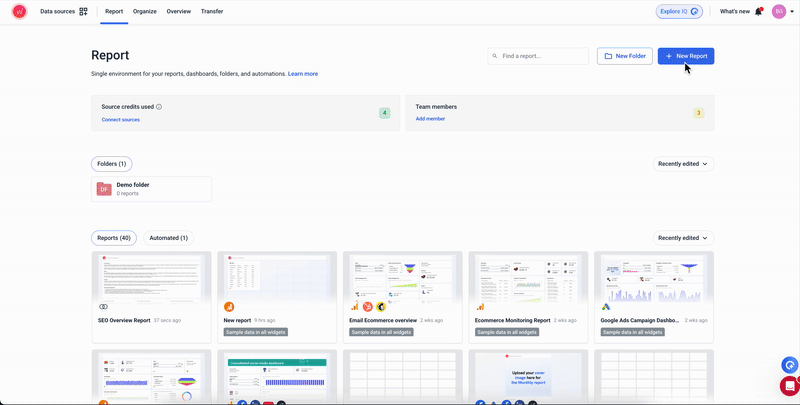
Once you’ve connected your data sources, here’s how to generate a new report the Whatagraph way:
- Click on “New Report.”
- Select “Create with IQ.”
- Choose your data sources. (I selected Google Analytics but I’ll be using sample data for this exercise.)
- Once your sources are connected, Whatagraph will automatically suggest smart AI prompts based on what’s available in those platforms (e.g. SEO summaries, traffic trends, backlink overviews, etc.)
- You can either use one of the suggested prompts or type your own.
- Click “Generate.”
And voila!
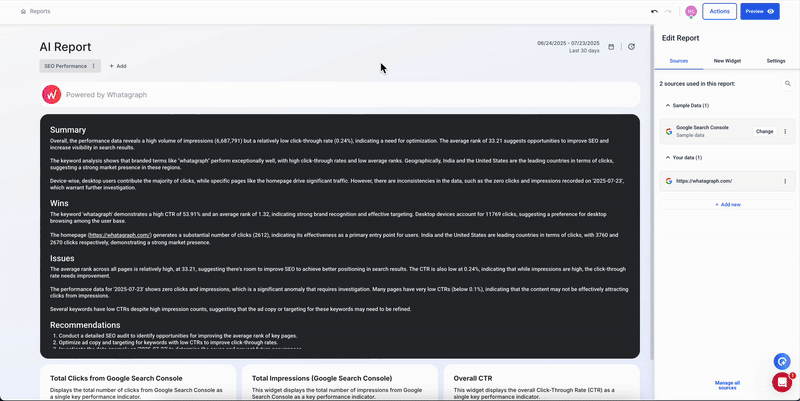
Here’s what you can do after Whatagraph generates your report with a single prompt in under 1 minute:
- Add widgets for specific KPIs: Want to spotlight backlink growth or keyword rankings? Drag in exactly the widgets you need—it’s fast, focused reporting that gets to the point.
- Edit any widget with plain English: Want a chart swapped for a table? Need to isolate paid traffic? Just type your request and let Whatagraph do the heavy lifting.
- Snap widgets to a grid for clean formatting: Everything aligns automatically, so your dashboards look polished, even if you built them in three and a half minutes.
- Change data sources on any widget: Pull the same metric from a different platform (e.g. swap Google Analytics for Ahrefs) without rebuilding the report.
- Click on the “Summary” tab to edit or rewrite insights: Fine-tune the AI-generated summary to match your tone or highlight specific wins. Format the text with a built-in text editor so everything is legible.
- Switch text widgets to dark mode (or your brand theme) for better accessibility: A small touch with real impact, especially for clients or teammates with visual sensitivities. (And no, from my research, Adverity doesn’t offer this.)
Can you customize and white-label reports without jumping to another tool?
Adverity offers white-labeling as part of its legacy “Explore” and “Present” module, but only if you ask for it, according to their documentation.
⚠️Note: “Present” doesn’t seem to be part of the current interface shown in Adverity’s G2 interactive demo. So, the demo and the help center documentation (which also doesn’t mention a clear “last updated” date) are telling two different stories. That makes it really hard to know what’s still supported versus what’s been quietly sunset.
Adverity’s white-labeling focuses primarily on aesthetic changes like swapping logos on the login screen and navigation bar, customizing the login screen background color, font color, and logo alignment; and hiding the Adverity name, version number, support links, copyright, and legal terms.
There’s no mention of domain rebranding, no control over email sender fields, and no white-label settings at the widget or report level.
In practice, Adverity users report a lack of flexibility and customization in the existing dashboards:
We work with stations and they like to customize and they were able to do that in our old platform and now cannot do that (with Adverity).
Reporting and dashboards feel basic and Adverity is slow to adopt generative AI and integrate it into the product.
The Whatagraph advantage: We’re a marketing data platform that knows just how important custom branding is in a client-facing environment. You get control at three different levels:
- Global team level: Set default branding for all reports your team creates.
- Report level: Apply client-specific branding for individual reports.
- Widget level: Customize visuals and styles on a per-widget basis.
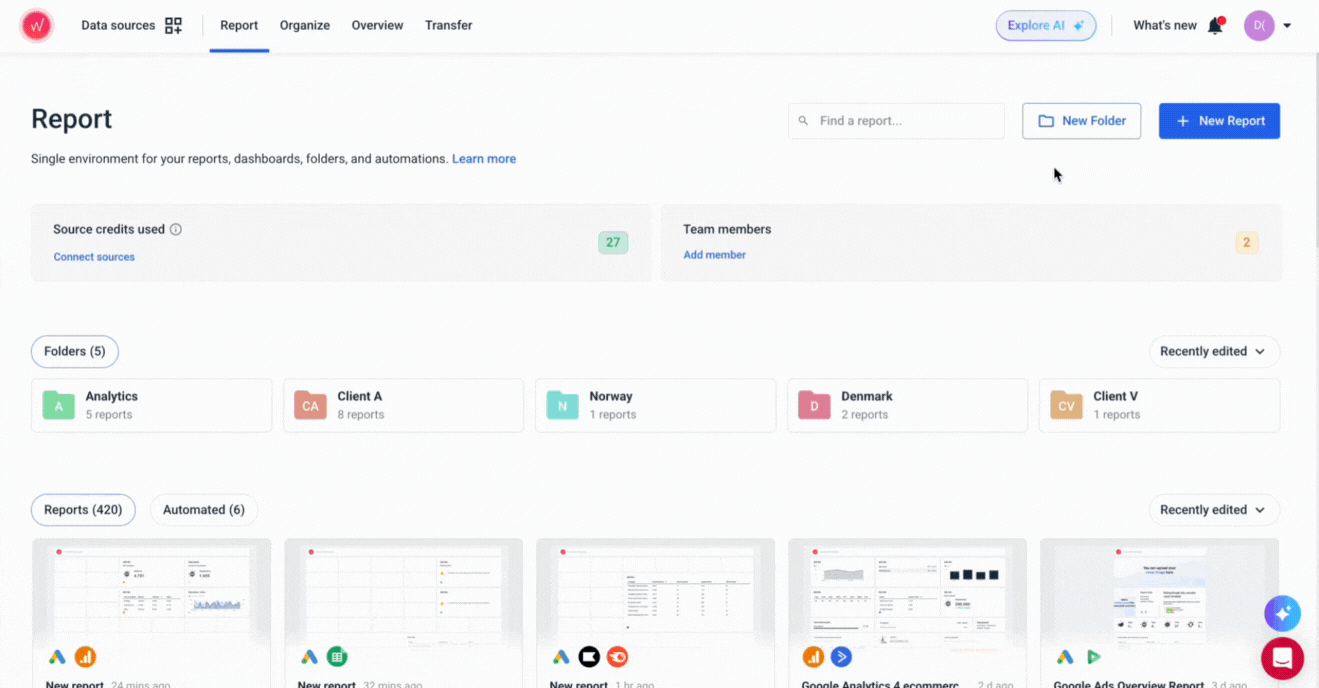
We could have stopped there, but we didn't.
With the “Custom Domain” feature, you can swap out the default whatagraph.com URL for a fully branded link like reports.yourcompany.com. This means automated emails come from your domain, not ours and clients see your brand in the sender field, not “via Whatagraph.”
The difference is that with Whatagraph, white-labeling is about making your client reporting feel native to your brand. With Adverity, it’s more about hiding their name, but without giving you full control of your own.
Adverity is first and foremost a data integration platform, not a client-facing reporting solution. If you need branded dashboards, ready-to-share white-labeled reports, or hands-off delivery for clients, look elsewhere.
Adverity Deep Dive #4: Daily Workflows and Customer Support
Let’s look at what it’s actually like to use Adverity on the daily.
Can you do end-to-end marketing analysis in a unified workspace within Adverity?
No.
Adverity is built for data integration, not for analysis or storytelling. You can pull data in, clean and transform it, and push it out. But once it’s out, you're often finishing the job somewhere else.
There’s no full-featured, built-in reporting layer for non-technical marketers to use confidently. Most users end up exporting to Looker Studio or Power BI for visual analysis and client delivery.
When it comes to sharing dashboards, Adverity is flexible, but its processes are scattered across multiple layers.
According to their documentation, sharing dashboards requires manual setup across different menus, some features (like expiration settings) are hidden in the “Administration” panel, there’s no built-in white-label control for share links or public-facing dashboards, and permissions and visibility can be confusing across users, guests, and collaborators.
The Whatagraph advantage: Schedule automated reports to be emailed to clients directly, share as live dashboards, static PDFs, or branded links, and customize report access at the team, report, or folder level.
Whatagraph is everything you need to to extract, analyze, present, and share, without leaving the platform or looping in a second (or third) tool.
And that’s exactly why happy customers like Kim Strickland, Digital Marketing Specialist at Peak Seven, ditched their “Frankenstack” of ETL + BI tools and went full in on Whatagraph to optimize their reporting operations.
Whatagraph is now our Bible—both for our clients and internal teams.
Here’s Kim in her own words:
Who do you call when something breaks?
Adverity offers implementation support to help streamline onboarding, but the real lift happens when you’ve got developers on standby. Here’s what they offer on paper according to their papers:
- A dedicated support team: Every customer gets an Implementation Manager for onboarding and an Account Manager for long-term support.
- Professional services: If you need help with a specific project or just want to be hands-off, you can bring in their Pro Services team to guide strategy, execution, or both.
- 24/7 help desk: The official line says support is available 24/7, with a 45-minute average first response time.
- On-demand learning: From long-form documentation to “Customer Focus Clinics,” there’s plenty of self-serve education available.
That sounds solid. And in many cases, it is. But in practice, support also depends on what’s broken.
In a typical ETL setup, Adverity connects to your platforms (e.g., Google Ads, TikTok) and sends data to your BI tools (e.g., Tableau, Looker). So if a dashboard breaks, it’s not always clear where the fault is…
Was it the connector? A sync failure? A third-party API change? A destination glitch?
That’s when you find yourself juggling support across two or more platforms to troubleshoot one broken report.
The Whatagraph advantage: One—not two, not three—great support team at your service, with a dedicated Customer Success Manager regardless of what you’re paying. Plus, we take 4 minutes to respond via live chat, not 45.
And our exceptional customer service is why clients LOVE us:
Whatagraph not only takes continuous feedback and adds new features based on it but one time they went way above and beyond for our agency and completely re-worked their API so we could get some specific valuable data in our reports
What are real users saying about their experience with Adverity?
The sentiment is largely positive, with a few noticeable detractors.
Users generally describe Adverity’s support team as responsive, capable, and helpful, especially when it comes to onboarding and maintenance.
“…the service by the help team is outstanding. They respond quickly upon a new ticket and try to assist as good as possible,” shares Quntyen L.
That said, there’s a noticeable gap between routine help and urgent issue response. While minor questions or connector tweaks are handled quickly, mission-critical problems sometimes take longer than expected to resolve.
“At time urgent matters are not taken up as quickly as they should be.”
And while Adverity encourages users to share feedback or suggest improvements, don’t expect fast turnaround on new features, according to this recent user review:
New feature proposal taking time before being implemented.
The Whatagraph advantage: While Adverity might log your feature request and get back to you…someday, Whatagraph actually ships. Take it from Stef Oosterik, Quality Manager at Dtch. Digitals, who’s seen it firsthand:
I’d say 80 to 90% of the necessary features we’ve requested on Whatagraph have been implemented.
Not only that; when something breaks, our team follows up daily until the issue is fixed.
Stef says: “9 out of 10 cases, the issue gets resolved. Most are fixed within a day.”
Adverity handles the data plumbing but leaves you stitching reports together in other tools, with scattered sharing and support that sometimes lags when urgency hits.
Final Verdict: When to Use Adverity and When to Switch
Choose Adverity if:
- You’re a large enterprise with serious data infrastructure: You’ve got a dedicated data team managing a mature BI stack. For teams with heavy data engineering needs, Adverity supports a wide range of use cases: from custom attribution modeling to multi-source spend aggregation.
- You treat marketing data as raw input for downstream tools: Your analysis and reporting happen elsewhere. Adverity’s job is to fetch and prepare the data, not to visualize it or tell the story.
- You have time, budget, and technical talent to manage complexity: You’re comfortable navigating API logic, UTC time zones, and custom field mappings.
- You want full control over transformations and source handling: Adverity is powerful when it comes to custom transformations, enrichment, and scheduling, but that power comes with a steep learning curve.
- You don’t need built-in reporting or white-label dashboards: You're okay with using Looker Studio, Power BI, or Tableau for the final output, and you’re not relying on your ETL platform to generate client-ready reports.
But what if you're not a 20-person data team with six months to implement and a stack full of separate tools?
What if what you really need is fast, accurate, and beautifully-branded reports all in one place?
If that's your reality, you're looking for Whatagraph:
- One platform, start to finish: Forget stitching together Adverity + Looker + Slack updates + PDF exports. With Whatagraph, everything—from data fetching to report delivery—lives in one streamlined workspace.
- Built for marketers, not engineers: Junior team member? New intern? Doesn’t matter. If they can write an email, they can build a Whatagraph report.
- Agency-ready, out of the box: Add your logo, match your brand colors, manage multiple clients from one dashboard, and deliver white-labeled reports that actually impress clients.
- Save hours—literally: Whatagraph clients consistently reclaim 30%-70% of their reporting time. That’s time repurposed for strategy, creativity, and happier clients.
Ditch the “Frankenstack.” Talk to us to see Whatagraph in action.

